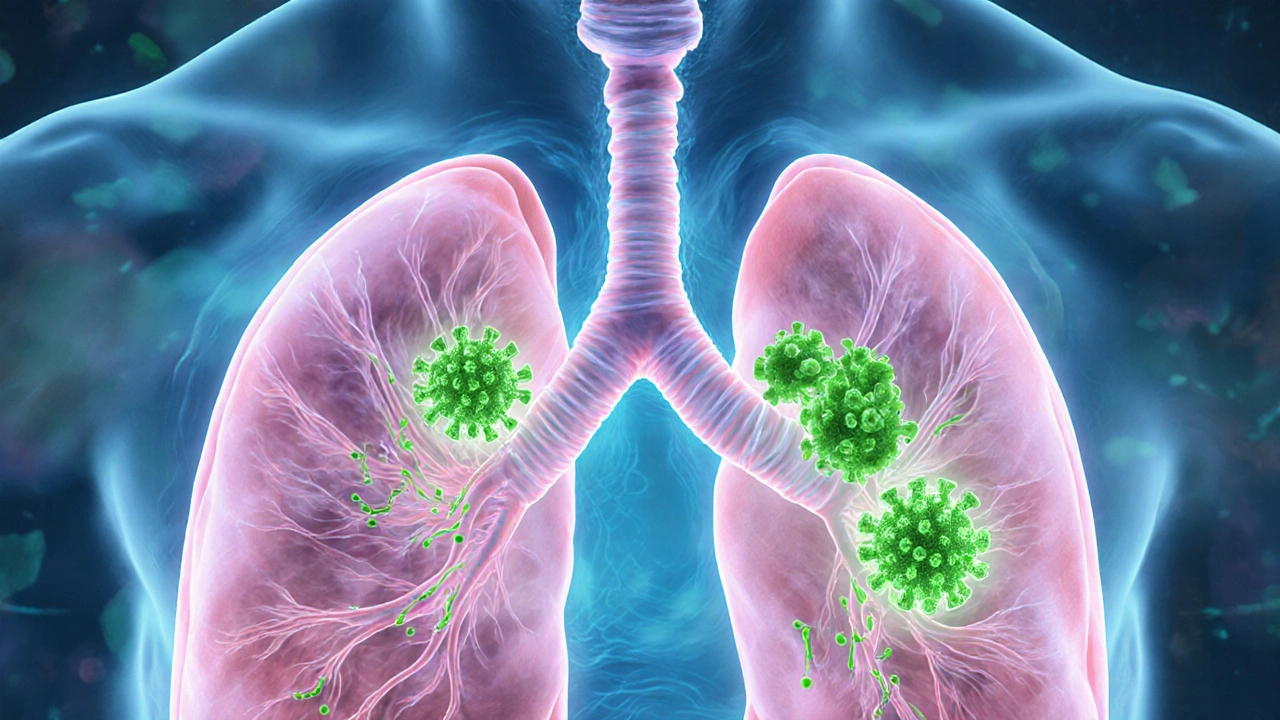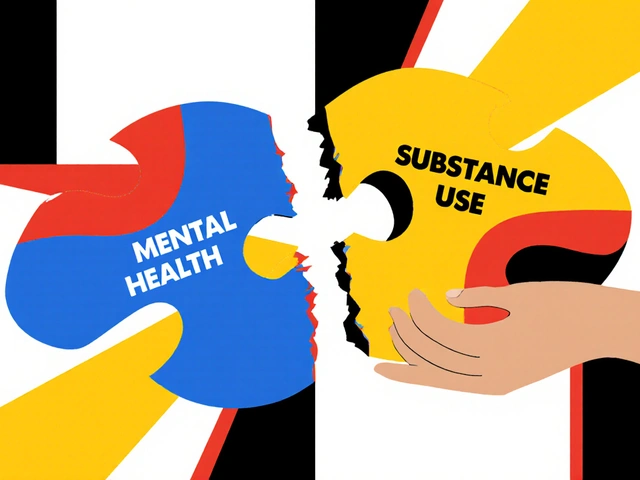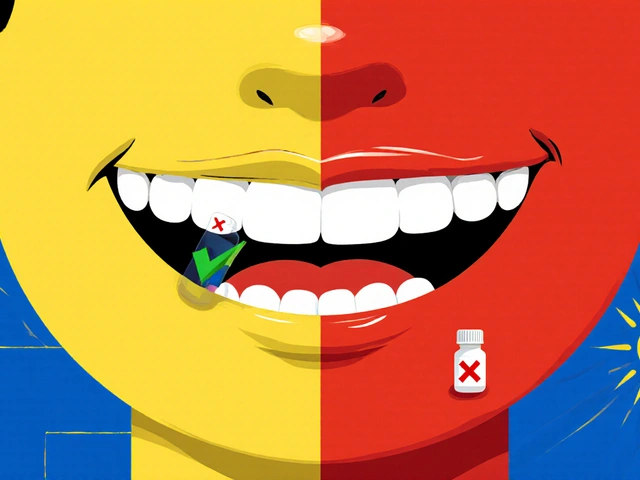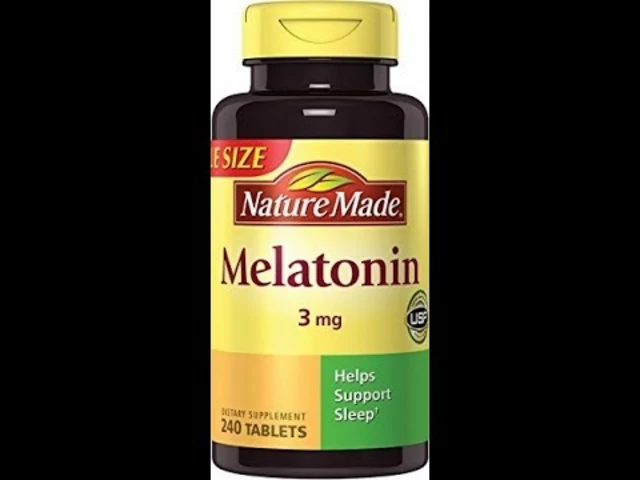The promise of gene therapy in cystic fibrosis has turned a once‑fatal diagnosis into a realistic target for lasting cure. Below you’ll find a quick snapshot, then a deep dive that covers the science, the platforms, the trials, and the road ahead.
- Gene therapy aims to correct the faulty CFTR gene rather than just manage symptoms.
- Three main delivery platforms are in human studies: viral vectors, lipid nanoparticles, and CRISPR‑based editors.
- Early‑phase trials show partial lung function improvement and acceptable safety.
- Key hurdles remain: immune response, efficient airway delivery, and regulatory pathways.
- Personalized approaches are emerging as sequencing costs drop.
Understanding Cystic Fibrosis
Cystic Fibrosis is a hereditary disease caused by mutations in the CFTR gene, leading to thick mucus in the lungs and pancreas. More than 70,000 people worldwide live with the condition, and the average life expectancy has risen from under ten years in the 1960s to over forty today, thanks to aggressive airway clearance, antibiotics, and CFTR modulators.
What Gene Therapy Means for CF
Gene therapy refers to the introduction, removal, or alteration of genetic material within a patient’s cells to treat disease. In the context of cystic fibrosis, the goal is simple: deliver a functional copy of the CFTR gene to the airway epithelium so that chloride channels open correctly, thinning mucus and restoring normal lung function.
Major Gene‑Delivery Platforms
Scientists have focused on three vectors that can navigate the airway’s defensive barriers.
| Platform | Typical Cargo | Delivery Route | Immunogenicity | Clinical Stage |
|---|---|---|---|---|
| Viral Vector (AAV) | Full‑length CFTR cDNA (~4.5kb) | Inhaled aerosol | Low‑moderate; pre‑existing antibodies possible | PhaseII/III trials |
| Lipid Nanoparticle (LNP) | mRNA encoding CFTR | Inhaled or nebulized | Generally low; transient inflammation | PhaseI/II |
| CRISPR‑Cas9 (ex vivo) | Ribonucleoprotein complex + repair template | Cell‑based transplant (airway basal cells) | Potential off‑target effects; immune to Cas9 protein | Pre‑clinical |
Each platform brings trade‑offs. Adeno‑associated virus (AAV) can carry the entire CFTR cDNA but is limited by pre‑existing immunity. Lipid nanoparticles dodge viral immunity but require repeated dosing because mRNA degrades quickly. CRISPR offers a permanent fix but currently demands an ex‑vivo step that complicates scaling.
Clinical Trial Landscape
Since 2018, more than a dozen clinical trials have explored these approaches. Notable examples include:
- Trial A (PhaseII, 2021): AAV‑CFTR delivered via nebulizer to 30 adults with the F508del mutation. Primary endpoint - a 5‑point rise in FEV1 at 12weeks, achieved by 40% of participants.
- Trial B (PhaseI/II, 2022): LNP‑mRNA inhalation in 12 children. Reported transient fever and mild cough, but lung function improved on average by 3% after the third dose.
- Trial C (Pre‑clinical, 2024): CRISPR‑edited basal cells re‑implanted in mouse models showed >90% correction of the CFTR locus and normalized chloride transport.
Regulators such as the FDA have granted “Fast Track” status to several of these programs, reflecting the high unmet need.
Delivery Challenges and Solutions
Getting a therapeutic payload into the thick mucus layer of the lungs is a engineering puzzle. Researchers have tested three delivery methods:
- Direct inhalation of virus‑laden aerosols. Advanced nebulizers now produce particles under 5µm, improving deposition in the small airways.
- Nanoparticle formulations coated with polyethylene glycol (PEG) to slip through the mucus mesh.
- Ex‑vivo editing of patient‑derived airway basal cells, followed by autologous transplantation via bronchoscopy.
Each approach balances invasiveness, dosing frequency, and manufacturing complexity. For instance, PEG‑coated LNPs reduce mucociliary clearance but may trigger anti‑PEG antibodies after repeated use.

Immune Response and Safety Considerations
Any foreign material introduced into the lung can provoke inflammation. The most common adverse events reported so far are mild fever, transient rise in C‑reactive protein, and short‑term bronchospasm. Rare cases of neutralizing antibodies against AAV capsids have led to diminished efficacy after a second dose.
Long‑term safety monitoring focuses on three areas:
- Insertional mutagenesis - especially relevant for viral vectors that integrate into host DNA.
- Off‑target genome editing - a concern for CRISPR approaches, mitigated by high‑fidelity Cas9 variants.
- Chronic inflammation - assessed via bronchoalveolar lavage cytokine profiles.
So far, the risk‑benefit profile looks favorable for patients with severe lung decline who have exhausted conventional therapies.
Personalized Medicine and Future Directions
Because over 2,000 CFTR mutations exist, a one‑size‑fits‑all gene therapy is unlikely. Personalized medicine is emerging in two ways:
- Tailoring vector serotypes to a patient’s antibody repertoire, identified via pre‑screening.
- Designing mutation‑specific CRISPR guides for rare alleles, aided by rapid whole‑genome sequencing.
In parallel, biotech firms are working on next‑generation capsids that evade immunity and on “dual‑function” nanoparticles that deliver both CFTR mRNA and anti‑inflammatory siRNA.
Regulatory pathways are also evolving. The EMA and FDA have launched joint guidances for gene‑editing products, emphasizing robust potency assays and real‑time safety monitoring.
Connecting the Dots: Related Concepts
Gene therapy does not exist in a vacuum. It intersects with several established and upcoming areas:
- CFTR modulator drugs (e.g., ivacaftor, lumacaftor) continue to improve quality of life and serve as a benchmark for gene‑therapy efficacy.
- Newborn genetic screening enables earlier intervention, potentially allowing neonatal gene‑therapy delivery before irreversible lung damage.
- Patient registries collect longitudinal data on lung function, informing trial design and post‑approval surveillance.
- Tele‑health monitoring provides real‑time adherence tracking for inhaled gene‑therapy dosing.
These ecosystems reinforce each other; a patient receiving a gene‑editing cure will still benefit from airway clearance physiotherapy and nutritional support.
Key Takeaways for Patients and Clinicians
• Gene therapy aims to fix the root cause - the defective CFTR protein.
• Viral vectors, lipid nanoparticles, and CRISPR each have distinct strengths and current trial status.
• Early results show modest lung‑function gains with acceptable safety, but repeat dosing and immunity remain hurdles.
• Personalized approaches and newborn screening could make a one‑time cure realistic within the next decade.
Frequently Asked Questions
What is the main goal of gene therapy for cystic fibrosis?
The therapy seeks to deliver a functional copy of the CFTR gene to airway cells, restoring proper chloride transport and reducing mucus buildup.
How does a viral vector differ from a lipid nanoparticle?
Viral vectors like AAV use a harmless virus to pack DNA and naturally enter cells, but they can trigger pre‑existing immunity. Lipid nanoparticles are synthetic carriers that encapsulate mRNA; they avoid viral antibodies but usually need repeat dosing because the payload degrades quickly.
Are there any approved gene‑therapy products for cystic fibrosis yet?
As of 2025, no gene‑therapy product has received full regulatory approval. However, several PhaseII and PhaseIII trials have reported positive safety and efficacy signals, and the FDA has granted Fast Track designation to multiple candidates.
What are the biggest safety concerns?
The primary concerns are immune reactions to the vector, potential insertional mutagenesis with integrating viruses, and off‑target edits when using CRISPR. Ongoing monitoring in trials includes blood cytokine panels and imaging to catch inflammation early.
How might newborn screening change the treatment timeline?
Early genetic diagnosis allows clinicians to consider gene‑therapy delivery before chronic lung damage sets in, potentially achieving a one‑time cure in the first months of life.





Lindsey Bollig
September 27, 2025 AT 16:53Hey folks! If you’re curious about how gene therapy actually works for CF, think of it like giving the cells a fresh set of instructions so the faulty CFTR protein gets fixed. The AAV vectors basically act as tiny delivery trucks that spray the correct gene straight into the airway lining. Lipid nanoparticles do a similar job but carry mRNA, which means you might need a few doses for a lasting effect. The cool part is that early trials are already showing modest improvements in FEV1, so we’re moving beyond just symptom management. Stay hopeful – the science is moving fast, and every new study brings us a step closer to a real cure.
Zachary Schroer
September 28, 2025 AT 11:00Honestly the hype is overblown 🤷♂️ the vectors are just another biotech fad 😂
Stacy Whitman
September 29, 2025 AT 06:26American researchers have been leading the charge on CF gene therapy, and it’s about time the world acknowledges the US labs driving most of the breakthroughs.
Kim and Lin
September 30, 2025 AT 00:30Totally agree 😊 The community effort is huge – labs sharing vector designs, clinicians pooling data, and patients volunteering for trials. It’s a collective push that can’t be ignored, even if some folks try to downplay the progress.
Kemari Nielson
September 30, 2025 AT 18:33The primary safety concerns remain immune reactions and potential off‑target effects; ongoing monitoring protocols are designed to detect these early.
Steve Helsel
October 1, 2025 AT 12:36Sure, “monitoring protocols” sound fancy, but we’ve seen similar promises fall flat in other gene‑therapy attempts.
Steve Moody
October 2, 2025 AT 06:40Well, let’s dive into the intricacies of the AAV platform, shall we?; First, the capsid serotype selection is absolutely paramount, because it dictates tropism, transduction efficiency, and immunogenicity; Second, the payload capacity, while limited to roughly 4.7 kb, fortunately accommodates the full‑length CFTR cDNA, which is a non‑trivial achievement; Third, manufacturing consistency remains a formidable hurdle, as batch‑to‑batch variability can influence both dose potency and safety profiles; Fourth, pre‑existing neutralizing antibodies in the patient population can dramatically curtail vector efficacy, necessitating thorough serological screening; Fifth, the route of administration-typically an inhaled aerosol-must generate particles below 5 µm to ensure deep lung deposition, a technical challenge that has been partially mitigated by modern nebulizer design; Sixth, the durability of expression is still under investigation, with some studies indicating waning transgene activity after several months, thereby raising questions about the need for re‑dosing; Seventh, the regulatory landscape is evolving, as agencies such as the FDA and EMA are crafting guidances that specifically address vector‑driven gene therapies, which adds a layer of complexity to trial design; Eighth, the cost considerations cannot be ignored, for large‑scale production of clinical‑grade AAV remains exorbitant, potentially limiting accessibility; Ninth, ethical considerations surrounding germline transmission, albeit unlikely with somatic delivery, still spark vigorous debate among bioethicists; Tenth, the comparative advantage of lipid nanoparticles-namely, lower immunogenicity-must be weighed against their transient expression and the necessity for repeated dosing; Eleventh, CRISPR‑based approaches promise a permanent genome correction, but off‑target editing and delivery methodology are still in their infancy; Twelfth, patient‑reported outcomes, such as quality‑of‑life metrics, are increasingly being incorporated into trial endpoints, providing a more holistic view of therapeutic benefit; Thirteenth, collaborations between academic institutions, biotech firms, and patient advocacy groups have accelerated data sharing, which is a testament to the community’s commitment; Fourteenth, emerging “dual‑function” nanoparticles that co‑deliver anti‑inflammatory siRNA alongside CFTR mRNA represent an exciting frontier, potentially addressing both the underlying defect and the inflammatory milieu; Fifteenth, the cumulative evidence suggests that while we are not yet at the finish line, the trajectory is undeniably upward; Finally, continued investment in both basic research and clinical translation will be essential to turn these promising signals into a widely available cure.
Adrian Hernandez
October 3, 2025 AT 00:43All this “progress” is just a ploy by big pharma to lock us into perpetual treatment cycles, nothing more.
duncan hines
October 3, 2025 AT 18:46OMG the whole gene therapy saga is like a telenovela – drama, betrayals, and scientists playing hero!!! I frickin cant even with the hype, it's like they promise miracles and deliver... still, the fight is real and we need to keep watching.
Mina Berens
October 4, 2025 AT 12:50Wow, the field is moving fast 🚀. Good to see all the collaborations and patient bravery! 😊
Chris Meredith
October 5, 2025 AT 06:53Guys, the momentum in CF gene therapy is electric – leveraging CRISPR-Cas9 base editing, next‑gen AAV capsids, and lipid‑nanoparticle mRNA delivery platforms. When you overlay real‑world efficacy data (ΔFEV1 improvements ≈ 5–7 %) with safety readouts (IL‑6, CRP spikes transient), the risk‑benefit matrix tilts favorably. Plus, the integration of tele‑health monitoring and AI‑driven dosing algorithms is streamlining adherence and pharmacokinetic modeling. Keep the optimism high; every incremental gain compounds towards a functional cure.
Jessie Eerens
October 6, 2025 AT 00:56One might contemplate, in the grand tapestry of biomedical advancement, whether the pursuit of a genetic “cure” merely reflects humanity’s innate desire to transcend inherent imperfection; yet, paradoxically, the very act of editing our genome may redefine what we deem “natural,” prompting ethical deliberations that echo through philosophy, theology, and science alike.
Caroline Lane
October 6, 2025 AT 19:00Honestly, this is just another hype train.